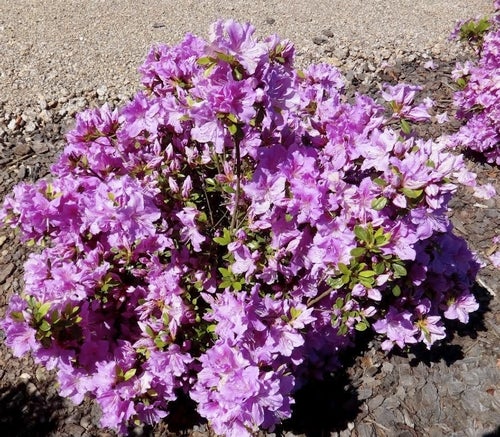All about azaleas: Keeping the popular plants healthy and blooming
Published 12:41 pm Friday, May 1, 2015

- Encore azalea in full bloom at the Southern Living Test Garden at the Agriculture Center on Old Concord Road. Azaleas are some of the most popular plants in Rowan County landscapes, and the stores and nurseries that carry them often sell out.
Azaleas remain one of the most popular plant materials landscapes in Rowan County. Nurseries, garden centers and other retail outlets consistently sell out of these plants each spring. Newly developed Encore azaleas have become very popular addition to urban landscapes. A relatively new addition to landscapes, Encore azaleas bloom in the spring and again into the fall. Some nurseries boast 9 months of bloom; however, in our area, most bloom three times a year, resting between blooms. These azaleas are especially popular because they can tolerate full sun and seem to be more heat tolerant than the older spring-blooming azaleas. Once established, the plants bloom consistently at different intervals during the summer and fall.
With all the rain and cool weather, most azaleas have done well but may have become leggy and misshapen with excessive growth. You can judiciously prune leggy azaleas after the blooms are spent. It’s also very important to avoid pruning late in the summer past July 4. Late summer is when azaleas typically set next season’s buds. Bud set can be ensured with adequate moisture and careful fertilization during the growing season. Adequate moisture and proper fertilization prepares plants for cold weather, and they are less likely to be winter damaged. Regular-grade fertilizers or those developed especially for azaleas can be applied now until August. Avoid fertilization after August. Tender growth promoted by late summer and early fall fertilization often occurs during unseasonably cold weather.
For showy blooms, azaleas need to be free from insects. Lace bugs will literally suck the lifeblood from the plant. Lace bugs are a serious pest of azaleas. Lace bugs are small clear-winged insects that feed on the underside of azalea leaves. There are usually two generations of adults during the summer season: one generation now and another generation emerging in August. Their presence is noted by yellow splotches on the upper side of the leaf. The leaves of a heavily infested azalea will appear totally bleached. Lace bugs deposit varnish-like black excrement (fly specks) on the lower surface of the leaves.
There are a couple of different options for controlling this pest. The easiest method is to treat with a systemic insecticide, which can be applied as a soil drench. The chemical is mixed with water and applied to the soil around the plants. The material will be translocated through the plant’s roots and move throughout the plant. This method is best as a preventative measure and will usually offer protection for a full year. Treatment should be done now if you have had problems with azalea lace bugs in the past.
Those that prefer a more conventional spray application must spray when the insects are active (mid-April, and again in August). Use horticultural oil or an insecticide containing pyrethroids for these sprays. You will most likely need to treat two times, 10 days apart to fully control azalea lace bugs. Because the insect lives on the underneath side of the leaf, it is very important for the spray to reach underneath the leaves when spraying.
Darrell Blackwelder is the County Extension director with horticulture responsibilities with the North Carolina Cooperative Extension Service in Rowan County. Learn more about Cooperative Extension events and activities by calling 704-216-8970, Facebook or online atwww.rowanextension.com




